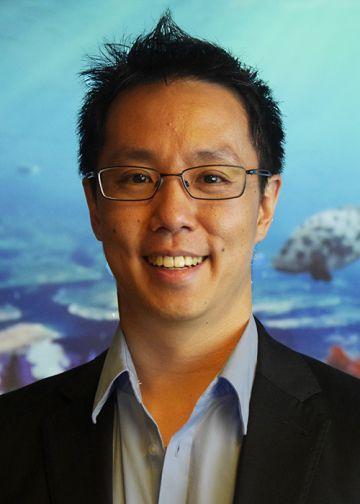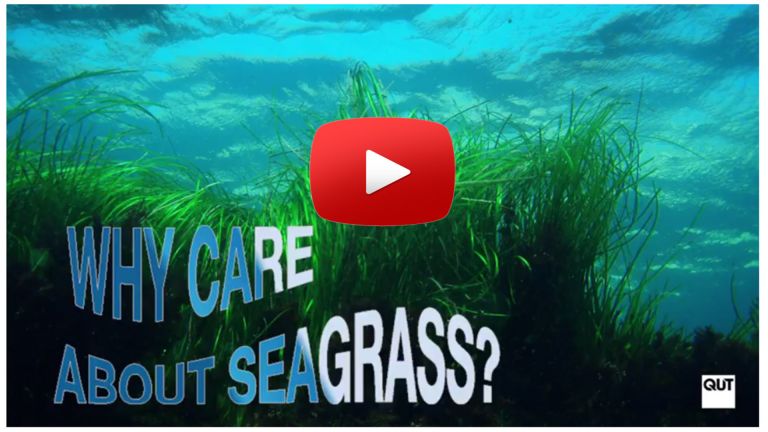Timing of dredging is the key to helping preserve one of the world’s most productive and important ecosystems - seagrass meadows.
- Seagrass meadows are among the most underappreciated, but most important ecosystems in the world
- Seagrasses are disappearing the same rate as tropical rainforests and coral reefs
- New research can provide answers on when and how much to dredge via an 'ecological window'
- Modelling provides up to fourfold reduction in time it takes seagrass to recover
- View or download video via Syncplicity
The study, published overnight in Nature Communications, was led by QUT researchers in collaboration with seagrass experts at Edith Cowan and James Cook universities.
The researcher, QUT's Dr Paul Wu, has developed a way of predicting when is the ideal time to dredge in order to give the seagrass the best and quickest chance of recovery.
Watch Dr Wu explain in the video below:

Dr_Paul_Wu
Dr Paul Wu
The team of researchers studied 28 seagrass meadows around the world.
Seagrasses provide shelter and food to an incredibly diverse community of life, from the tiniest marine creatures to fish, turtles, dugongs, other marine mammals and birds.
It is also estimated one hectare of seagrass can absorb 35-times as much carbon dioxide as a hectare of Amazon rainforest, as well as produce 100-thousand litres of oxygen per day.
Despite this immense value, large areas of seagrass are disappearing every year because of accumulated stressors, including human activities, most notably dredging.
Dr Wu is an Associate Investigator with the ARC Centre of Excellence for Mathematical and Statistical Frontiers (ACEMS) within QUT’s Mathematical and Statistical Sciences Faculty.
He developed an advanced statistical model to predict when dredging is least likely to damage seagrass.
Dr Wu said the model could be used globally, not just in Australia.
“We found that globally, our model can provide up to a four-fold reduction in recovery time, and up to a 35 per cent reduction in local extinction risk for seagrass species,” said Dr Wu.
“So if the seagrass can come back more quickly, or you can minimise the impact on it, that will also help everything that depends on it.”
The modelling also takes into account another very important factor – resilience.
Some areas of seagrass are stronger and healthier and can handle more stress. The modelling looks at how resistant a system is to change, how quickly it can recover, and considers the probability of extinction in local populations.
“Being able to tell the difference between a site where you can do some dredging and it will come back, a site that is at its limit and you shouldn’t do any more to it, or a site that’s already dying and it doesn’t make a difference about what you do to it, is very important,” said Dr Wu.
There are dozens of seagrass species around the world. They typically grow along gently sloping, protected coastlines.
Seagrasses depend on light for photosynthesis, most commonly found in shallow depths where light levels are high.
Dredging can significantly reduce the amount of light reaching the seagrass.
"There are natural phases of seagrass growth and reproduction, therefore, at particular times seagrasses could be more or less vulnerable to degreding pressures," Dr McMahon said.
“By combining our knowledge of the biology of seagrasses with natural environmental fluctuations and human pressures we identify the best time to minimise long-term impacts for human activities.”
Dr Wu believed proponents of dredging and coastal development would be among those who could benefit from the use of this model.
“The model allows dredging and coastal development to move forward, but helps mitigate the environmental impacts on seagrass and the many ecosystems that depend on it," said Dr Wu.
Dr Wu said his Bayesian network model combines both the use of data with expert knowledge.
“As with many ecosystems, there isn’t enough data to fully understand the system,” Dr Wu said.
“The processes are too complex and there is too much variability in nature. We bolster the data we have with expert knowledge from seagrass scientists who dive on the seagrass beds, studying them and taking samples, decades of valuable experience.”
Those experts come from the School of Sciences and Centre for Marine Ecosystems Research at Edith Cowan University, the Western Australian Marine Science Institution in Perth, the UWA Oceans Institute and School of Biological Sciences at the University of Western Australia, and the Centre for Tropical Water & Aquatic Ecosystem Research at James Cook University.
“What makes the model even more important is that it isn’t limited to just seagrass. It could be used to model other natural ecosystems under stress, like mangroves and coral reefs,” Dr Wu said.
JCU’s Dr Michael Rasheed said the model was more practical than existing systems.
“Global trends indicate favourable windows in autumn and winter where dredging causes the least damage,” Dr Rasheed said.
“Ideally, impact assessments of dredging campaigns do still need to be customised for specific meadows at specific periods in time and incorporate uncertainty associated with forecasted future conditions in the area.”
High res photos and a pdf of the journal article can be provided upon request.
Co-authors are: Distinguished Professor Kerrie Mengersen (QUT’s School of Mathematical Sciences and Deputy Director of ACEMS), Dr Kathryn McMahon (School of Sciences and Centre for Marine Ecosystems Research, Edith Cowan University), Professor Gary A Kendrick (University of Western Australia), Kathryn Chartrand, Dr Paul H York, Dr Michael Rasheed and Adjunct Professor Julian Caley (QUT & Australian Research Council Centre of Excellence for Mathematical and Statistical Frontiers).
Media contact: Debra Nowland, QUT Media, +61 7 3138 1150 (Mon/Wed/Thurs) or media@qut.edu.au
After hours: Rose Trapnell, 0407 585 901
Tim Macuga, Communications & Media Officer, ARC Centre of Excellence for Mathematical & Statistical Frontiers (ACEMS) PH: +61 7 31386741 Email: Timothy.Macuga@qut.edu.au Mobile: 0478 571 226
Alistair Bone, James Cook University Media Liaison, PH: +61 7 4781 4942 or 0409 734 542
Ben Jones, Corporate Communications Officer, Edith Cowan University, PH: +61 8 6304 2381


